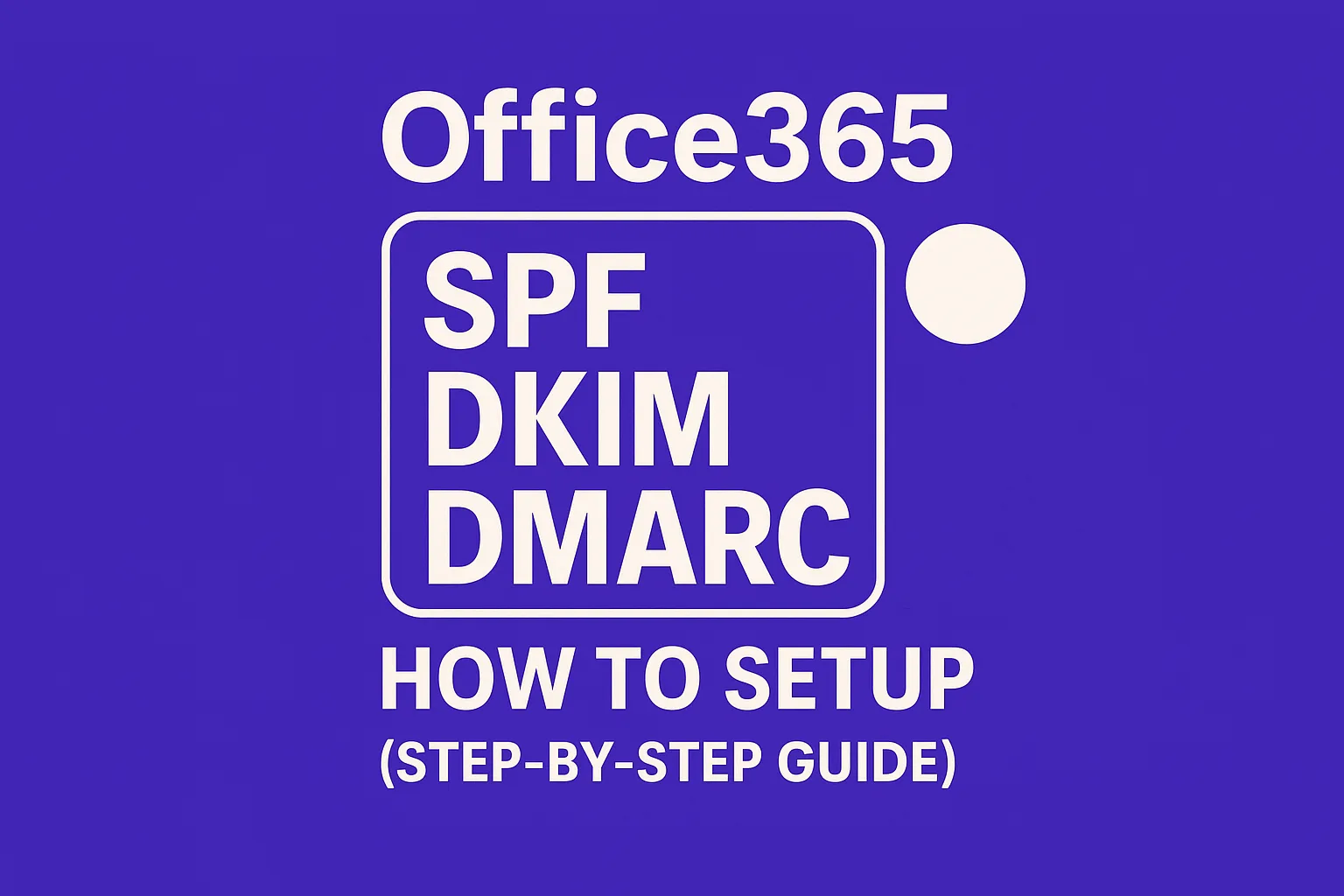What “bad sender reputation” really means
You send a regular email, but it lands in the spam folder. That disappointment is a result of sender reputation in action. Mailbox providers continuously score your domain, IP address, and sending behavior. When your score is low, your messages appear risky, leading to filtering or delivery throttling.
For a more comprehensive resource, consider this complete guide to email deliverability for 2025. It lays the groundwork for the information that follows.
Reputation is the trust you earn from consistent, authenticated, low-risk sending.
How mailbox providers judge your domain
- Complaints: Excessive “This is spam” clicks reduce trust quickly.
- Bounces: Frequent hard and repeated soft bounces indicate poor list maintenance.
- Spam traps: Sending to pristine traps signals questionable data sources.
- Authentication: Correct SPF, DKIM, and DMARC records confirm your identity.
- Sending history: New domains have no track record, and sudden increases in volume are seen as risky.
- User actions: Opens, replies, saving, and organizing emails into folders demonstrate recipient engagement.
- Infrastructure: Shared IPs with untrustworthy neighbors or incorrect rDNS settings can negatively affect reputation.
All these signals accumulate over time. The overall sending pattern matters more than any individual email.
How to spot a bad sender reputation
- Inbox placement decreases, even though the number of sent emails remains the same.
- Outlook or Gmail returns deferred messages with 4xx-type errors.
- Your test and seed emails are consistently delivered to the spam folder.
- Bounce and complaint rates increase from week to week.
- Your domain or sending IP appears on email blocklists.
If two or more of these issues occur at the same time, it’s likely you are experiencing a sender reputation problem.
Common causes you can fix
- Sudden volume spikes: Dramatically increased sending volume without proper warming.
- Cold domain: Using a new domain for immediate large-scale campaigns.
- Weak authentication: Missing or misaligned SPF, DKIM, or DMARC records.
- Mixed traffic: Sending both transactional and cold outreach from a single domain.
- Bad data sources: Using purchased or scraped lists that trigger high bounce and trap rates.
- Dirty infrastructure: Shared IP addresses with poor sender neighbors, or outdated DNS records.
- URL and tracking issues: Use of blacklisted links or problematic tracking domains.
- Inconsistent cadence: Sending in bursts followed by long periods of inactivity.
Solving these issues begins with isolating the problem, gathering evidence, and carefully rebuilding your reputation. Let’s break down the process.
Quick triage plan
Step 1: Pause and isolate
Immediately stop all risky sends. Separate transactional traffic from outreach emails right away. Use a subdomain for cold campaigns wherever possible.
Step 2: Confirm the scope
Assess delivery by provider, issues with Gmail may differ from those with Outlook. Review SMTP logs and error codes to find patterns.
Step 3: Fix obvious breakage
- Correct SPF syntax and ensure DKIM selector alignment.
- Set up DMARC with a monitored reporting address.
- Remove any problematic links or tracking domains that could trigger spam filters.
Step 4: Plan a warm-up path
Send small volumes consistently. Focus on controlled engagement to gradually rebuild trust with providers.
Rebuild trust with an email warm-up routine
Email warm-up mimics genuine inbox interactions in a low-risk environment. The objective is to demonstrate consistent, positive engagement patterns to mailbox providers before scaling your sends. Think of this process as rehabilitation for your domain.
What a good warm-up includes
- Gradually increasing your volume over several weeks.
- Receiving replies from real, active users across multiple providers.
- Automatically rescuing emails from the spam folder back to the inbox.
- Tagging messages to primary folders to strengthen inbox signals.
- Careful send timing that resembles your typical cadence.
Services like Mailwarm can assist with this process, leveraging a network of over 1,000 active, well-maintained mailboxes. These mailboxes open, reply, rescue messages from spam, and tag them as primary, all at your preferred pace.
A simple four-week template
- Week 1: Begin with low daily volume, ensuring all authentication is consistent.
- Week 2: Slightly increase volume while maintaining engagement through replies.
- Week 3: Add targeted test sends to reliable, trusted contacts.
- Week 4: Approach your normal daily sending baseline, and closely monitor provider dashboards.
Warm-up traffic serves only a technical purpose, not for marketing. It prepares your domain and inbox for genuine outreach.
Set the technical foundation
SPF, DKIM, and DMARC
- SPF: Authorize every sending host and service correctly, avoid the “+all” configuration.
- DKIM: Use a dedicated selector for each platform and implement 2048-bit encryption keys.
- DMARC: Align domains and analyze reports, gradually moving to a strict policy when stability is confirmed.
Alignment and domain choices
Align the visible From address, DKIM “d=” domain, and SPF domain where possible. Use different subdomains for cold outreach and keep transactional emails on a separate domain or subdomain.
Infrastructure hygiene
- Set correct DNS and matching HELO hostnames.
- Consider separate IPs for different mail streams when necessary.
- Regularly rotate and monitor tracking domains for reputation issues.
Domain and sending strategy that helps
- Age your domain: Register your sending domain well in advance and warm it up before real outreach.
- Ramp slowly: Gradually increase daily sending volumes in small, steady increments.
- Keep cadence steady: Prevent erratic sending gaps or volume spikes.
- Segment streams by purpose: Separate outreach, transactional, and newsletter streams.
- Use seed and panel tests: Validate deliverability before ramping up campaigns.
While patience can be difficult, a slow and steady approach helps safeguard sender reputation in the long run.
Monitor the right signals
- Complaint rate: Keep this as close to zero as possible.
- Hard bounces: Remove email addresses after a single hard bounce.
- Soft bounces: Retry a few times, but suppress addresses after repeated deferrals.
- Inbox placement: Track by provider throughout and after warm-up.
- Blocklists: Monitor your domain and IP status every week.
Leverage postmaster tools where available and correlate trends with your sending schedule. Even minor adjustments can impact your reputation.
Putting it all together
A bad sender reputation may seem damaging, but it is not irreversible. Focus on foundational best practices, reduce your sending volume, conduct a careful warm-up, and confirm positive engagement before scaling again.
If you need a second opinion on your email setup, it’s a good idea to consult with digital deliverability specialists. For expert assistance, consider reaching out to the team at mailadept, who specialize in email deliverability and can provide tailored guidance for your needs.
FAQ
Why do emails often land in the spam folder?
Emails end up in the spam folder due to a poor sender reputation, marked by factors such as high complaint rates and sending to spam traps. This isn't just bad luck; it's a direct result of neglecting proper email practices and recipient engagement.
What are the primary factors that impact sender reputation?
Sender reputation hinges on complaints, bounces, spam trap hits, user interactions, and authentication records. Ignoring these factors is a sure route to being blacklisted, no matter how compelling your content might be.
Can a domain with a bad reputation be repaired?
Repairing a domain with a tarnished reputation is possible but not guaranteed. It demands a disciplined warm-up routine, strict adherence to best practices, and careful monitoring to avoid repeating past mistakes.
Is switching to a new IP a quick fix for email deliverability issues?
Switching IPs without addressing domain reputation will likely transfer the problem rather than solve it. A new IP can help only if current issues are tied specifically to the IP, otherwise, the domain's history must be tackled first.
How can one recognize a sender reputation problem early?
Signs like declining inbox placement, escalated bounce rates, and being listed on blocklists signal looming reputation issues. Ignoring these early red flags will only deepen deliverability woes, complicating future remediation efforts.
What common mistakes lead to poor email deliverability?
Sudden increase in sending volume, weak domain warm-up, and using questionable contact lists are major pitfalls. These mistakes reflect a lack of strategic foresight and inevitably lead to spam folder placement nightmares.
Is email authentication alone enough to ensure good delivery rates?
Authentication sets the technical foundation, but it’s not a panacea. Without engaging content and clean lists, authenticated emails can still underperform and damage long-term sending credibility.
What steps are involved in rebuilding a tarnished sender reputation?
Rebuilding requires isolation, top-notch list hygiene, strategic volume control, and gradual warm-up. Ignorance of this multi-step process could lead to repeated deliverability failures and wasted outreach efforts.








